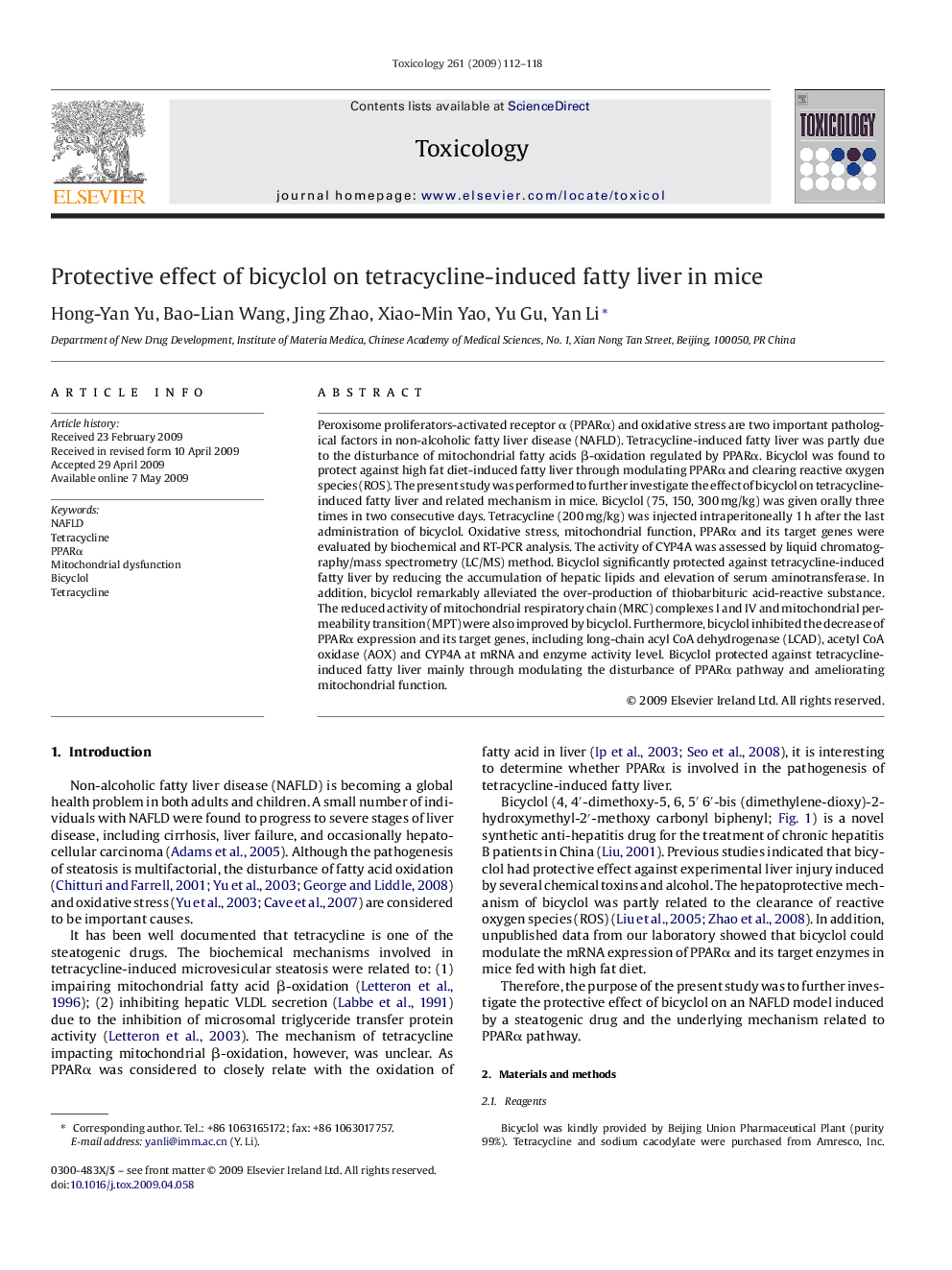| کد مقاله | کد نشریه | سال انتشار | مقاله انگلیسی | نسخه تمام متن |
|---|---|---|---|---|
| 2596723 | 1132545 | 2009 | 7 صفحه PDF | دانلود رایگان |

Peroxisome proliferators-activated receptor α (PPARα) and oxidative stress are two important pathological factors in non-alcoholic fatty liver disease (NAFLD). Tetracycline-induced fatty liver was partly due to the disturbance of mitochondrial fatty acids β-oxidation regulated by PPARα. Bicyclol was found to protect against high fat diet-induced fatty liver through modulating PPARα and clearing reactive oxygen species (ROS). The present study was performed to further investigate the effect of bicyclol on tetracycline-induced fatty liver and related mechanism in mice. Bicyclol (75, 150, 300 mg/kg) was given orally three times in two consecutive days. Tetracycline (200 mg/kg) was injected intraperitoneally 1 h after the last administration of bicyclol. Oxidative stress, mitochondrial function, PPARα and its target genes were evaluated by biochemical and RT-PCR analysis. The activity of CYP4A was assessed by liquid chromatography/mass spectrometry (LC/MS) method. Bicyclol significantly protected against tetracycline-induced fatty liver by reducing the accumulation of hepatic lipids and elevation of serum aminotransferase. In addition, bicyclol remarkably alleviated the over-production of thiobarbituric acid-reactive substance. The reduced activity of mitochondrial respiratory chain (MRC) complexes I and IV and mitochondrial permeability transition (MPT) were also improved by bicyclol. Furthermore, bicyclol inhibited the decrease of PPARα expression and its target genes, including long-chain acyl CoA dehydrogenase (LCAD), acetyl CoA oxidase (AOX) and CYP4A at mRNA and enzyme activity level. Bicyclol protected against tetracycline-induced fatty liver mainly through modulating the disturbance of PPARα pathway and ameliorating mitochondrial function.
Journal: Toxicology - Volume 261, Issue 3, 10 July 2009, Pages 112–118